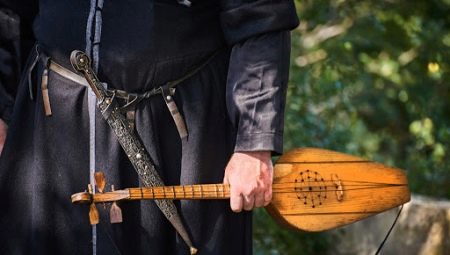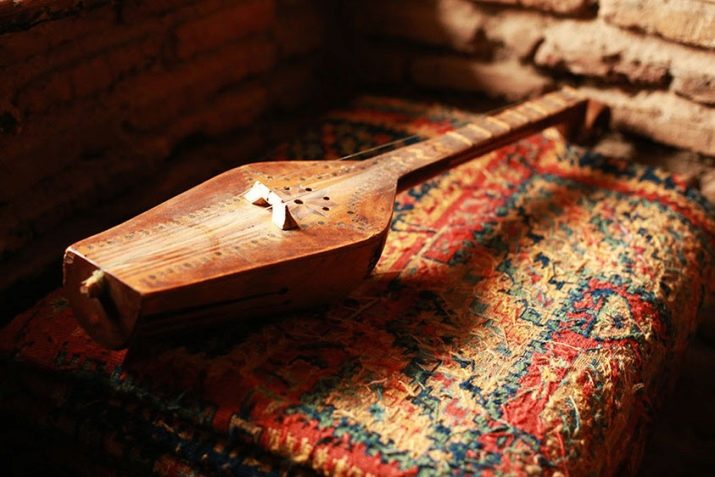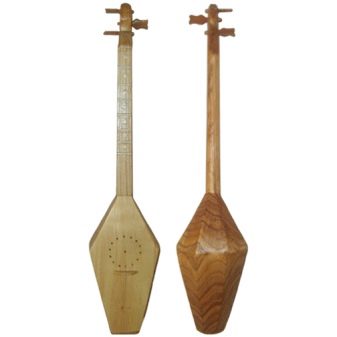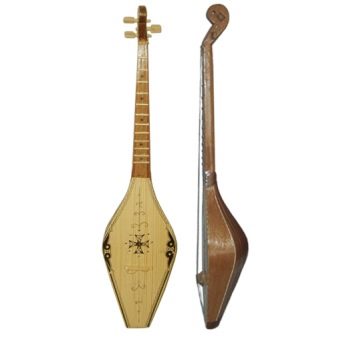Musical instrument panduri

Panduri refers to string-plucked musical instruments, consists of a body, neck, head, and also has three strings. In form and appearance, there are some similarities with the balalaika. The instrument was most widespread in Georgia, but it is considered a symbol of its eastern part. The first mention of him, found in the literature, dates back to the 5th century. Since the 10th century, the name of this instrument has been actively used in writing.

Peculiarities
In Georgia, panduri is a symbol of happiness and joy, therefore, families in mourning were forbidden not only to play it, but even to keep it in a conspicuous place for a whole year. If during mourning the family has to hold a wedding or other holiday, then a person close to the family could play the panduri, and then pass it on to other guests so that they continue the game. When the right amount of time passes and the mourning ends, a holiday is arranged at which the head of the family first sings a song, accompanying it with playing the panduri, and only after that everyone else can start walking and having fun.
The rest of the time, in Georgian families, it is used as the main accompaniment on almost all holidays, they perform songs of any genre to it: love, heroic and comic. Mostly women played it, they sang under the panduri in chorus or solo during work, sang ditties to it and danced at the holidays.
Sometimes poems are read under the panduri, praising folk heroes.

Since ancient times, this musical instrument has been used during rituals, it is an integral part of any rituals. For example, it participates in the "lighting" of New Year's beer: women must go around the vessel in which beer is brewed several times, while singing and accompanying themselves on panduri.Even church holidays are often accompanied by his melody. The lullaby "Iavnana" was traditionally performed to the accompaniment of panduri.
In other countries, there are different prototypes of panduri, for example, among the Armenians it is a fundirni, and among the Arabs it is a tonburi.


In the middle of the last century in Georgia, K. Vashakidze created an improved model of panduri, thanks to which it became possible to play it in a professional orchestra performing folk music.
In Georgia, it is impossible to imagine a family in which there is no panduri at home - usually it is hung in a prominent place on the wall. If the family could not afford such a purchase, then they were sure to present this instrument, and it was considered the most valuable gift. It used to cost about as much as one sheep. A person who plays the panduri well is called on all holidays, he is known and respected in many circles. Therefore, this musical instrument has become so widespread, and the Georgian people accompany any of their activities by playing on it.


Shapes and sizes
Each Georgian region has its own shape of the panduri corps. One example is an instrument housed in the Museum of Music. It was made about 100 years ago, has a spade-like shape and a curved bottom. In addition, there are tools with the shape of an oar, boat, seashell or pear. And also panduri differ from each other in the number of holes on the deck.



Usually the entire tool, including the body, neck and head, is made from a single piece of wood. Traditionally, it should be cut down on the full moon, and the top is taken, which is cut in half. As a result, they use the part that was more illuminated by the sun. Sometimes panduri are made by joining thin pieces of wood. When creating a deck, pine or spruce is preferable. It is necessary to make a pair of resonator holes in it, and holes for the tuning pegs on the panduri head. And also to the body it is necessary to nail a wooden plank for the application of fingers, align its edges along the contour of the instrument, coated with wax.
You need to play the panduri either with all your fingers, or using only your thumbnail.

Setting up and playing
The panduri tuning is second-quart, usually tuned like this:
1st string - Mi E C # A;
2nd string - C # (clamped at the 3rd fret sounds in unison with the 1st string);
3rd string - A (at the 4th fret it sounds in unison with the 2nd string, and at the 7th fret it sounds in unison with the 1st string).
Thanks to the open (not pressed) strings, a major A (A) chord is formed.
See the video for setting up panduri.








